Go to Part 1
LOCATION: TEMPLE OF THE GARGOYLE
The Temple of the Gargoyle is a gothic-like structure, its sheer walls of dark gray stone towering three stories above the street, with four towers – one at each of its corners – climbing to twice that height. Every inch of its surface has been ornately and intricately carved, and much of it altered two or three times since the temple was originally constructed. Many of the oldest, weatherworn figures are oddly disturbing if viewed in close detail, and rumors whisper of other things: Of stone faces which writhe in agony when the moon is right and the stars are aligned; of stone figures which can be seen on certain nights, but not on others; of cryptic and indecipherable runes which flow across the surface of the stone and then vanish without trace.
The first – and often most lasting impression – that many have of the Temple, however, are its gargoyles: One stands atop each of the four towers, and two others stand on pedestals to either side of the temple’s twin doors of iron-bound oak.
Those twin doors open onto the temple’s great hall. Unseen by those outside, two other gargoyles – on pedestals mirroring those which stand outside – stand to either side of the altar at the far end of the hall. Directly before the altar a pit gapes in the temple floor, and flames from below – fueled by some unknown source – perpetually light the hall. Archways, beneath a balcony which runs down either side of the hall’s length, lead to other rooms of the temple, which are generally extravagant.
CHARACTER: ARGHRASMAK, THE LIVING GOD
Arghrasmak is the living god of the Temple of the Gargoyle, worshipped by a high priest, seven disciples, twenty adepts, and thirty-eight acolytes (described below). It is said that when the god sleeps, those near him will lose all memory. Three sacrifices upon the altar are necessary to rouse the god, whereupon the tithe is thrown into the pit.
In truth, Arghrasmak is not a god – he is a gargoyle fiend who feeds upon the misery and pain his witless followers inflict for him. He lairs in his pit, and covets the gold and treasure which is given in tribute to him. Upon his right hand he wears a ring of forgetfulness (see sidebar) which he has modified to operate continuously over the area of the Temple upon his command. (The story that the mind-numbing effect is triggered by his sleep is a false lure that fuels the need for new sacrifices.) Occasionally, this effect has been known to slip outside the boundaries of the Temple and effect those nearby. (These reports are frequently dismissed as lingering effects from the Mindwarp.)
Upon his left hand he wears a ring of command (see sidebar), which he uses to control the eight gargoyles of the Temple. Although they appear to be nothing more masterpieces of monstrous sculpture, in truth they are creatures which serve upon his whim.
ARGHRASMAK, THE LIVING GOD (CR 14) – CE Gargantuan Magical Beast (Earth)
DETECTION – darkvision 60 ft., Listen +14, Spot +14; Init +0; Languages Common, Abyssal, Terran[special]
DEFENSES – AC 19 (+13 natural, -4 size), touch 6, flat-footed 19; hp 280 (16d10+192); DR 15/adamantine; Resist cold 20, fire 20; SR 24
ACTIONS – Spd 45 ft., fly 75 ft. (average); Melee 2 claws +25 (2d6+12) and bite +23 (2d8+12) and gore +23 (2d8+12); Ranged +12; Space 20 ft.; Reach 20 ft.; Base Atk +16; Grapple +40; Atk Options smite good; Combat Feats Cleave, Great Cleave, Power Attack
SQ darkvision 60 ft., freeze
STR 35, DEX 10, CON 34, INT 18, WIS 11, CHA 7
FORT +24, REF +12, WILL +7;
FEATS: Cleave, Great Cleave, Multiattack, Power Attack, Weapon Focus (claw, bite, gore)
SKILLS: Hide +8, Listen +14, Perform +4, Spellcraft +4, Spot +14
Smite Good (Su): Once per day, Aghrasmak can make a normal attack to deal additional damage equal to his HD total (+16) against a good foe.
Freeze (Ex): Arghrasmak can hold himself so still that he appears to be a statue. An observer must succeed at a Spot check (DC 20) to notice that he is really alive.
New Magic Item: Ring of Command
The wearer of this ring may, at any time, designate a creature within sight. The creature must make a Will save (DC 18) or fall under the control of the ring’s wearer (as per a dominate person spell). This control lasts until either the ring’s wearer chooses to release the creature, the ring is removed by the wearer, the ring is destroyed, or the ring and creature come to exist on separate planes.
The wearer of the ring may control no more than eight subjects at any given time with the ring.
Caster Level: 16th
Prerequisites: Forge Ring, dominate person
Market Price: 256,000 gp
New Magic Item: Ring of Forgetfulness
All enemies within 20 feet of the wearer of this ring are affected as per the spell mind fog. Affected creatures must make a Will save (DC 20) or suffer a –10 penalty to all Wisdom checks and Will saves. Affected creatures suffer the penalty as long as they remain within 20 feet of the ring and for 2d6 rounds thereafter.
Caster Level: 10th
Prerequisites: Forge Ring, mind fog
Market Price: 100,000 gp
TEMPLE GARGOYLES
GARGOYLE (CR 4) – CE Medium Monstrous Humanoid (Earth)
DETECTION – darkvision 60 ft., Listen +4, Spot +4; Init +2
DEFENSES – AC 16 (+2 Dex, +4 natural), touch 12, flat-footed 14; hp 37 (4d8+19); DR 10/magic
ACTIONS – Spd 40 ft., fly 60 ft. (average); Melee 2 claws +6 (1d4+2) and bite +4 (1d6+1) and gore +4 (1d6+1); Ranged +6; Space 5 ft.; Reach 5 ft.; Base Atk +4; Grapple +6
SQ darkvision 60 ft., freeze
STR 15, DEX 14, CON 18, INT 6, WIS 11, CHA 7
FORT +5, REF +6, WILL +4
FEATS: Multiattack, Toughness
SKILLS: Hide +7*, Listen +4, Spot +4
Freeze (Ex): Observer must succeed on Spot check (DC 20) to notice gargoyle is not a statue.
*Skills: +2 racial bonus on Hide, Listen, and Spot checks. +8 racial bonus on Hide checks when gargoyle concealed as statue.
CHARACTER: LAGHAR
Laghar is the High Priest of the Temple of the Gargoyle. In word and deed he serves his living god with abject faithfulness, collecting the sacrifices necessary to rouse the god – and thus not only grant his priesthood a few hours of clear thought, but also save the world from the slow spread of the god’s “poison of the mind”.
In truth, however, Laghar knows the falseness of his god. By sheer chance one of the sacrificial victims gathered by the acolytes of the temple wore upon his hand a ring of greater mind shielding (see sidebar). Before flinging it into the pit as tithe, Laghar slipped the ring onto his own finger… and gained a rare clarity of thought. Unwittingly, he had become immune to Ahgrasmak’s magical enchantment.
In the time since then, he has slowly and carefully pieced together much of the true story behind his “god”. At the same time, even as he continues his foul rituals, his piety has been replaced with greed and power lust. Laghar has concocted a scheme by which he hopes to wrest control of the Temple from Ahgrasmak and, more importantly, gain the riches contained in the Pit below: He has contacted Athelbrus the sorcerer (The House of Sorcerers, H5) and contracted him to construct seven more rings like his own. These he hopes to give to the Seven Disciples, freeing them as he has been freed. Together, he feels that they should be able to destroy Ahgrasmak.
He is probably right, but, unbeknownst to him, Athelbrus intends to betray him. In fact, the creation of a new ring of greater mind shielding is quite beyond his abilities – and even if he could make them, their cost would be far beyond the value of the treasure to be found in the Pits. Instead, he intends to contract a group of adventurers to sneak into the Temple and loot the Pit of the riches Laghar has told him of – splitting the treasure with them. The open question, however, is whether or not Athelbrus realizes the true strength of the Living God and his minions.
New Magic Item: Ring of Greater Mind Shielding
The wearer of a ring of greater mind shielding is perpetually protected as if they had been the subject of a mind blank spell – rendering them immune from all devices and spells that detect, influence, or read emotions or thoughts. It also protects against all mind-affecting spells and effects as well as information gathering by divination spells or effects. The ring even foils limited wish, miracle, and wish when they are used in such a way as to affect the wearer’s mind or gain information about him.
Caster Level: 16th
Prerequisites: Forge Ring, mind blank
Market Price: 256,000
THE SEVEN DISCIPLES AND THE PRIESTHOOD
Like Laghar, Ahgrasmak’s Disciples and Priests are, in fact, sorcerers who have been duped into believing that their powers are an unholy gift of their “god”. The Seven Disciples, along with Laghar, are responsible for the leadership of the Temple and performing the Sacrifices of Ahgrasmak. The other priests perform a variety of minor rituals, but spend much of their time inscribing the Prophecies of the Gargoyle.
These prophecies are granted to the priests in continuous visions from their sleeping god. The prophecies seen in these visions are in a language unknown to the priests – who must copy the alien script from their minds with precision. It is believed that one day the god will reveal the language in which the Prophecies are written, and their great mysteries will reveal a path of glory and power. It is also believed that the Prophecies are imperfect and overlapping – and great study is given to those indecipherable passages which, nonetheless, correspond in some degree between the visions of different priests. It is hoped that such study will allow the construction of a perfect version of the Prophecies.
THE ACOLYTES
The Acolytes spend much of their time confined to their small meditation chambers on the third floor. They emerge in pairs to serve as guads, and en masse in times of dire need. More importantly, they are charged with gathering the sacrificial victims for the Temple’s altar.
LOCATION: THE PITS BENEATH THE TEMPLE
Ahgrasmak: Here the living god crouches upon a block of blood-stained ivory.
The Pyre of the Dead: This powerful, unholy relic (see below) burns up through the floor of the Temple’s great hall.
The Bone Pits: When first viewed, the bone pits appear to be nothing more than a jumbled conglomeration of random bones. Upon Ahgrasmak’s command, however, the bones shift and move. Skeletal, humanoid figures – glowing a deep and malevolent purplish blue – rise from the pits, forming a veritable legion of unholy skeletons (see sidebar) within 1d4+1 rounds.
Treasure: Over 125,000 gp in gems, jewelry, and coins are piled here. In addition there are 3d6 minor magical items, 2d4 medium magic items, and 1d4 major magic items mixed in with the other treasure.
New Magic Item: Pyre of the Dead
The pyre of the dead is, in fact, a powerful item of unholy magic – capable of transforming bodies that are fed into it into unholy skeletons (see below). For every three bodies which are cast into it, the pyre creates one unholy skeleton: Feeding upon the souls and substance of two of the bodies to fuel the unholy enchantments placed upon the third.
Control of the unholy skeletons created by the pyre rests with whatever creature is currently attuned to the pyre. (Obviously the pyre in the Temple of the Gargoyle is attuned to Ahgrasmak.) Up to 128 unholy skeletons can be controlled in this manner at any one time, and this number does not affect the normal control limits of the creature (if any). The pyre will continue creating unholy skeletons beyond this 128 limit, but unless the creature has some other way to control the skeletons, these additional skeletons will be uncontrolled.
Caster Level: 16th Prerequisites: Craft Wondrous Item, animate dead, control undead (x4), unholy aura Market Price: 740,000 gp
UNHOLY SKELETONS
The pits have become home to 100 unholy skeletons, created by the pyre of the dead from the sacrifices thrown down from above. There would, in fact, be more of these skeletons – but from time to time Ahgrasmak looses portions of his horde into the city above to wreak whatever terror and chaos they can accomplish.
UNHOLY SKELETONS (CR 2) – NE Large Undead
DETECTION – Listen +0, Spot +0; Init +5
DEFENSES – AC 17 (-1 size, +1 Dex, +3 natural, +4 deflection), touch 14, flat-footed 12; hp 24 (2d12); DR 5/bludgeoning; Immune cold, undead immunities (ability damage/drain, critical hits, death effects, disease, energy drain, fatigue, mind-affecting, nonlethal damage, paralysis, poison, sleep, stunning, any effect requiring Fort save); Resist spell 20 (vs. good spells and spells cast by good creatures)
ACTIONS – Spd 40 ft.; Melee 2 claws +2 (1d6+2); Ranged +2; Space 10 ft.; Reach 10 ft.; Base Atk +1; Grapple +5
SQ turn resistance +4, spell resistance 20 (vs. good spells and spells cast by good creatures)
STR 14, DEX 12, CON -, INT -, WIS 10, CHA 11
FORT +4, REF +5, WILL +8
FEATS: Improved Initiative
SKILLS: –
This material is covered under the Open Game License.
 I’m generally a fan of Sherlock (the modern reimagining of Sherlock Holmes by Steven Moffatt and Mark Gatiss that’s so ubiquitous I’m just going to assume you know about it). I have some rather lengthy thoughts on how Moffat’s handling of Doctor Who has gone off the rails that I may spew across the Alexandrian at some point, but Sherlock has managed to mostly avoid those problems.
I’m generally a fan of Sherlock (the modern reimagining of Sherlock Holmes by Steven Moffatt and Mark Gatiss that’s so ubiquitous I’m just going to assume you know about it). I have some rather lengthy thoughts on how Moffat’s handling of Doctor Who has gone off the rails that I may spew across the Alexandrian at some point, but Sherlock has managed to mostly avoid those problems.


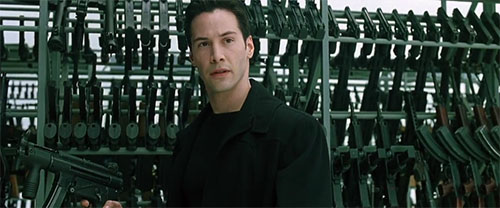

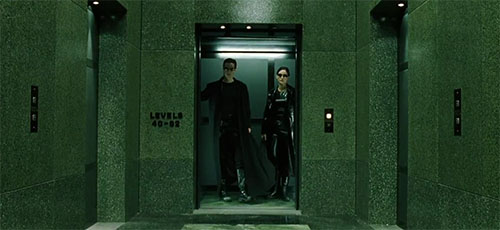

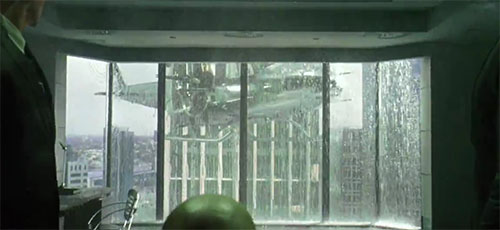

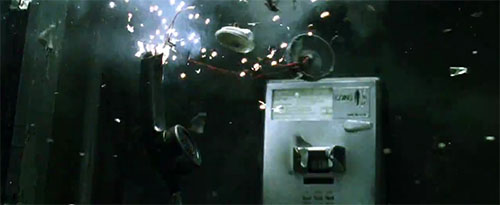
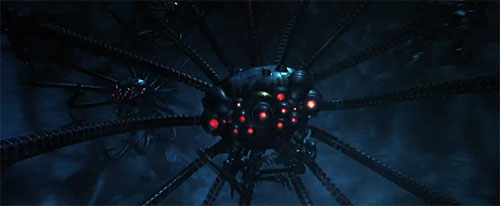
 You may have heard that the word “geek” was originally used to describe circus freaks who would entertain the crowd by biting the heads off of live fish (or some other bizarre feat).
You may have heard that the word “geek” was originally used to describe circus freaks who would entertain the crowd by biting the heads off of live fish (or some other bizarre feat).









